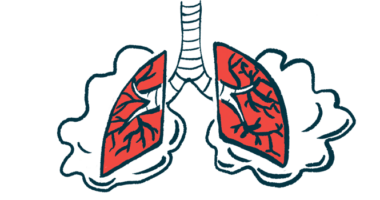Protocol enables ERT after Pompe disease treatment reaction
Desensitization process allowed treatment in IOPD infant

A desensitization protocol allowed doctors to successfully treat an infant with classic infantile-onset Pompe disease (IOPD) who developed an allergic reaction to Myozyme (alglucosidase alfa), according to a report.
The protocol, which was also used when the patient switched to Nexviadyme (avalglucosidase alfa), involved delivering the Pompe disease treatment at a gradually increasing dose together with medication to reduce allergic and inflammatory reactions.
“Severe [infusion-associated reactions] to ERT [enzyme replacement therapy] are not frequent, but life-threatening hypersensitivity reactions may occur in some IOPD patients,” the researchers wrote. “This is of paramount importance, as ERT is vital for these patients.”
The report, “Successful desensitization protocol to alglucosidase and avalglucosidase alfa in a patient with infantile-onset Pompe disease,” was published in Molecular Genetics and Metabolism Reports.
Pompe disease is caused by mutations in the GAA gene that lead to missing or dysfunctional acid alpha-glucosidase (GAA), an enzyme needed to break down glycogen, a complex sugar molecule. This results in the abnormal accumulation of glycogen inside cells, particularly in muscle cells, impairing their function.
Baby responded to Pompe disease treatment before reaction
IOPD symptoms usually start in the first months of life and progress rapidly. They include breathing difficulties, muscle weakness, and cardiomyopathy, or disease of the heart muscle.
Without Pompe disease treatment, children usually do not survive past age 2 due to heart and/or respiratory failure. The introduction of ERT, which involves administering a working version of the GAA enzyme, has been improving survival and slowing the progression of muscle damage.
The researchers, in Spain, described the case of a patient diagnosed in the first days of life. After hearing a heart murmur, an unusual sound indicating that blood is flowing abnormally across the heart valves, they performed a cardiac evaluation that revealed severe hypertrophic cardiomyopathy, a condition in which the heart becomes enlarged and cannot pump blood efficiently.
Laboratory analysis revealed increased creatine kinase levels, a marker of muscle damage, leading to a suspicion of IOPD. Analysis of a dried blood sample indicated the infant had low activity of the GAA enzyme, and a genetic analysis confirmed a mutation in both copies of the GAA gene, confirming the IOPD diagnosis.
When the infant was 16 days old, ERT treatment was initiated with Myozyme (sold as Lumizyme in the U.S.) at a dose of 40 mg/kg every two weeks. An immunomodulation regimen was also initiated to avoid the development of antibodies against ERT.
“There was a good response to ERT, with the patient scoring within the normal range in Alberta Infant Motor Scale longitudinal assessments [of motor developments], in addition to not requiring any respiratory or nutritional assistance,” the investigators wrote. Hypertrophic cardiomyopathy had resolved by the time the infant was five months old.
At 18 months, the child experienced urticaria (itchy skin reaction) after Myozyme infusion, which was treated with intravenous (into-the-vein) infusion of antihistamine, a medication used to treat allergic reactions. However, in the next infusion, and despite pretreatment including antihistamine and a slowed Myozyme infusion rate, he again developed urticaria, with upper lip swelling and bronchospasm (when the muscles lining the airways tighten).
Further testing revealed elevated levels of immunoglobulin E, a type of antibody associated with allergic reactions. The researchers developed a desensitization protocol to administer 20 mg/kg Myozyme weekly, at a gradually increasing dose to deliver a total dose of 200 mg over a period of more than five hours. The child weighed 10 kg (22 pounds).
Medications to reduce allergic and inflammatory reactions were given one hour before Myozyme initiation, with no more allergic reactions seen in the patient.
However, as the child experienced a clinical decline, with an increase in creatine kinase levels and glucose tetrasaccharide (Glc4), a breakdown product of glycogen, the researchers decided to switch treatment to Nexviadyme (Nexviazyme in the U.S.), when the child was 2.
The treatment was given at a dose of 40 mg/kg every other week, using a similar desensitization protocol to deliver a total dose of 480 mg over about 4.5 hours. The child weighed 12 kg (26.4 pounds) at the time. He showed clinical and biochemical improvement, with a reduction of creatine kinase and Glc4 levels and no infusion-related reactions.
“We provide a desensitization protocol to [Myozyme] and, for the first time, a desensitization protocol to [Nexviadyme], both delivered in a reasonable time of less than 6h, and without any further reactions in our patient,” the researchers wrote.







